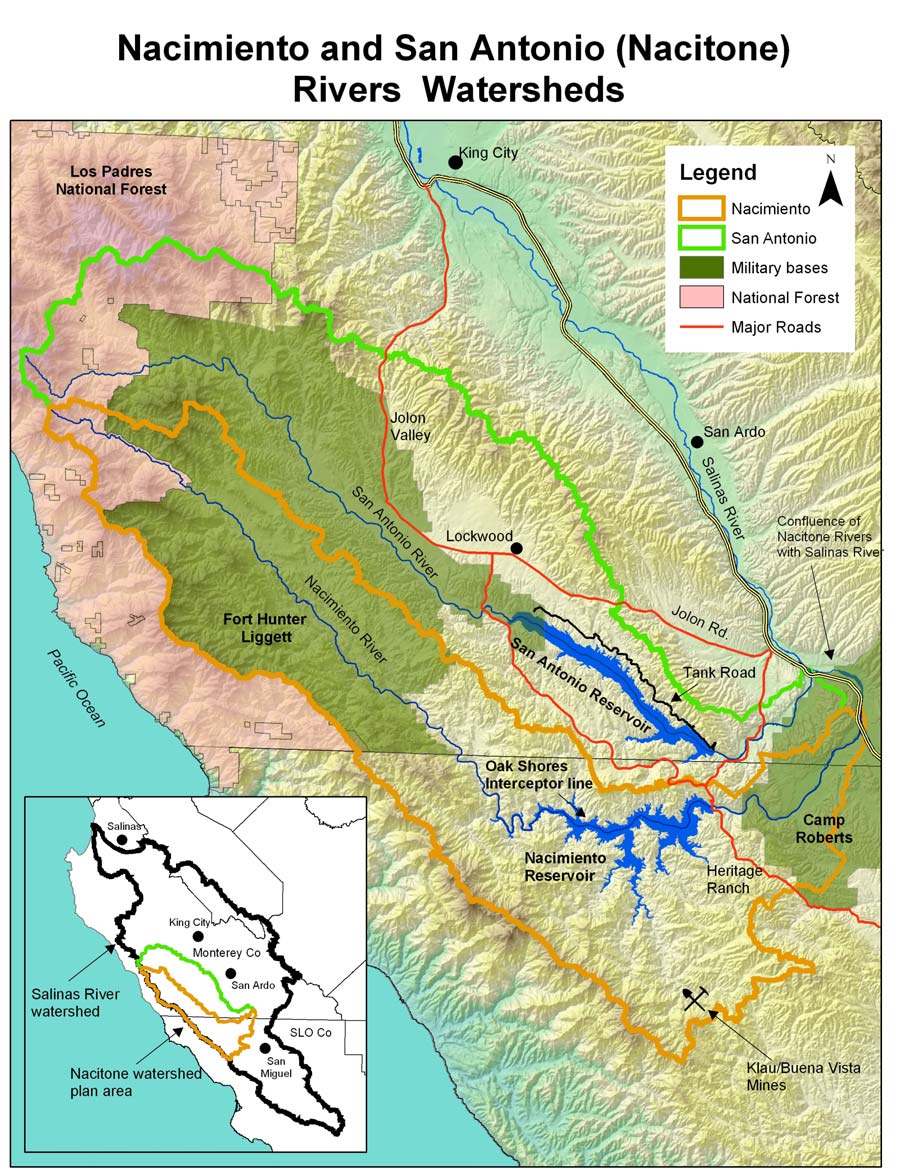ABOUT US
Preserving the history of the San Antonio & Nacimiento Watersheds of the Central Coast
Mission Statement
The museum’s mission is to preserve and display the history of the area from the time of the Salinan inhabitants through the Spanish and pioneer era and to teach future generations about their pioneer heritage.
Motto
Our motto is “Enrich Your Future, Discover The Past”
History of the Nacitone Museum
Located in the Monterey County town of Lockwood, the Nacitone Museum is the culmination of a dream shared by two local pioneering families, the Pattersons and Saylers. Floyd L. Patterson Jr. and a few of the Sayler cousins started talking about setting up a museum in Lockwood about 30 years ago. The dream was prompted by the large numbers of antique and vintage farm equipment that were stored on the homesteads throughout Lockwood and adjoining communities. To establish the museum, the Patterson family donated 10 acres adjacent to Jolon Road for the museum and grounds. After 10 years of working with Monterey County, fundraising, planning and construction the museum opened to the public in February of 2016.
Nacitone Museum Foundation was founded by:
- Floyd L. Patterson, Jr.
- Clarence Sayler
- Floyd L. Patterson, III
- Calverne Sayler
- Neil Wollesen
- Donald Gillett
- Bud Rieverts
Nacitone Watershed
Comprised of the Nacimiento and San Antonio River watersheds, the term “Nacitone” originates from the Dust Bowl days when the United States Soil Conservation Service formed the Nacitone Soil Conservation District (NSCD). The District combined “Naci” from the Nacimiento Watershed with “tone” from the San Antonio Watershed to derive “Nacitone” which reflected the combined watershed areas under their protection to control soil erosion. As described by the Resource Conservation District of Monterey County (RCDMC), the Nacitone Watershed is located in the southern part of Monterey County and is comprised of the San Antonio and Nacimiento River watersheds and covers an area of approximately 705 square miles. The Nacitone Watershed is bordered by the Santa Lucia Range on its northwest side and extends east and southeast to the Salinas River in both Monterey County and San Luis Obispo County, with the majority of the Nacimiento River watershed lying in Monterey County and about half of the San Antonio River Watershed located in Monterey County.
The Nacitone Watershed consists of a variety of terrains and land uses, including agriculture, grazing, recreational (Lake San Antonio), wild lands (Los Padres National Forest), military (Fort Hunter Liggett), cultural (Mission San Antonio) and rural residential. The San Antonio River sub-watershed includes the Ventana Wilderness of Los Padres National Forest (owned by the US Forest Service) and the Fort Hunter Liggett Military Base (owned by the US Army). Nacimiento River watershed includes Ventana Wilderness, Fort Hunter Liggett, and Camp Roberts, where both the Nacimiento and San Antonio Rivers meet the Salinas River. Both of the watersheds originate near Cone Peak in the Santa Lucia Mountains at elevations over 3,000 feet and drain into their respective reservoirs, the San Antonio Reservoir, in Monterey County, and the Nacimiento Reservoir, in San Luis Obispo County, which together contribute the majority of the drainage to the Salinas River Valley.
The San Antonio River and the neighboring Nacimiento River watersheds run parallel through the inland side of the Santa Lucia Mountains, with both rivers flowing southward into the Salinas River in the vicinity of Bradley. Most of the foothills and mountains on the flanks of the San Antonio valley are remote, steep, and difficult to access. Native habitats include grasslands, chaparral, riparian woodland, and foothill oak and pine woodlands. The valley is abundant in wildlife and is largely pristine due to the presence of federal land ownership, and is home to a large Tule elk population. Two communities, Bryson-Hesperia and Lockwood, are located within the Nacitone Watershed.

Source: San Antonio & Nacimiento Rivers
Watershed Management Plan, 2008
The Nactione region has been occupied continuously by the Salinan people, many who continue to live in Lockwood and surrounding areas. The Salinan population and culture was severely disrupted by the Spanish mission system and specifically by the founding of the Mission San Antonio. Many of the Salinan and early Mexican families remained in the area after the Spanish land grants were broken up. The early pioneers, bearing still prominent surnames, began arriving in the mid-1800s from places like the Island Fohr in Germany’s North Frisian Islands. Some traveled by covered wagon from eastern US. Some of the original homes are still being lived in by family today and some of the homesteaded farms and ranches are still operating 160 years later.
Charitable Organization Status
Nacitone Museum gained status as a non-profit, tax-exempt 501(c)(3) organization governed by a Board of Directors with a volunteer staff in December, 2011. The volunteer workforce is comprised of knowledgeable people who have worked with and restored the equipment on display as well as creating active demonstrations of how the equipment was historically used.
Charitable Organization Details
| Employer Identification Number (EIN): | 710877555 |
| Name of Organization: | Nacitone Foundation Inc |
| In Care of Name: | Neil Whitty |
| Address: | Box 278, Lockwood, CA 93932 |
| Subsection: | Charitable Organization |
| Ruling Date: | 12/2011 |
| Deductibility: | Contributions are deductible |
| Foundation: | Organization which receives a substantial part of its support from a governmental unit or the general public |
| Organization: | Corporation |
| Exempt Organization Status: | Unconditional Exemption |
